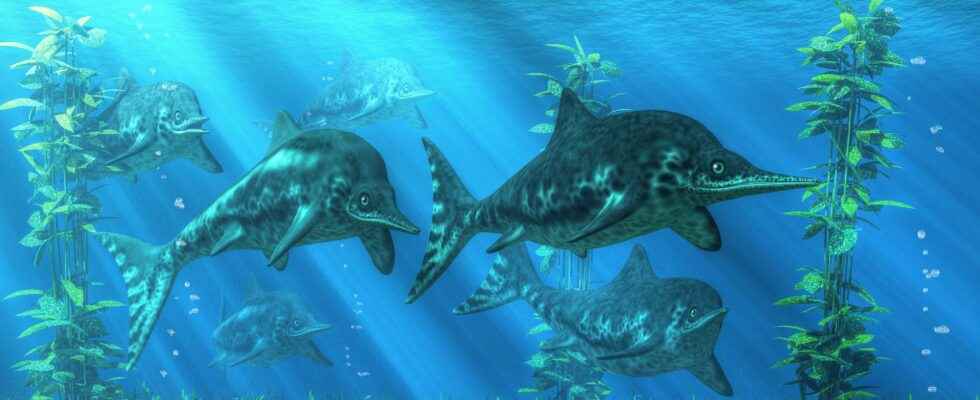You will also be interested
[EN VIDÉO] Interview: where to find dinosaur fossils? Disappeared 65 million years ago, the dinosaurs nevertheless left some traces in fossil form. But what are the most favorable geological conditions for their conservation and where can they be found? Futura-Sciences asked the question to Éric Buffetaut, paleontologist, during this interview.
The Geological Reserve of Haute-Provence, near the town of Digne-les-Bains, is known for its breathtaking landscapes, shaped by the tectonic compression at the origin of the Alps. The Reserve is also an opportunity to discover great fossiliferous sites important, like the famous ammonite slabtraces of fossilized bird footprints, but also a rare ichthyosaur fossil.
This last site, less known than the slab with ammonites located along the road, yet very easy to access. The walk, easy and family, is an opportunity to discover the fossil of a dinosaur sailor, having lived on the site around 185 million years ago!
A rare marine reptile fossil in Haute-Provence
Located in the commune of La Robine, this fossil is unique because of its exceptional preservation. The skeleton is indeed almost whole and is on the spot, at the place where it was discovered. It is one of the first fossils of vertebrates to have been protected in situ, in Europe. It is of course impossible to touch the slab in which it is imprisoned, but you can easily observe this very ancient marine predator up close, whose streamlined body resembles that of a contemporary dolphin.
Ichthyosaurs were indeed not Pisces, but vertebrates. It is assumed that they had to come to the surface to breathe. The species went extinct without knowing why 93 million years ago. The ichthyosaurs, however, will have criss-crossed the terrestrial oceans for more than 150 million years. The La Robine specimen was assigned to the very rare genus Suevolviathan. The other specimens of this genus and of similar age have only been found in southern Germany, indicating in fact an oceanic connection between the northern basin (present-day Germany and the Baltic States) and the subalpine sea which occupied the region of Haute-Provence before the formation of the Alps. This sea was notably connected to the ocean Tethys.
A site that allows you to better understand the geological history of the region
About 4 meters long, the skeleton rests on the left side. Although being almost complete, the ichthyosaur fossil has nevertheless undergone some deformations which could confuse the recognition of the different parts of the body. A reconstruction and various explanations allow us to see things more clearly. Remains of other ichthyosaurs have been identified at the site, as well as many ammonite fossils, belemnite rostrums who occupy the strata underlying.
The geological environment and in particular the study of the sedimentary rocks of the site also make it possible to learn more about the dynamics of the marine basin at the time of the ichthyosaur. The region was then under extensive stress, producing many flaws making the seabed very irregular, with large variations in bathymetry. On the site are thus visible facies sediment reworking, erosion and current figureslike the ripples of waves.
It would be this extensive tectonic dynamics, prevailing 185 million years ago in the region, which would have favored the preservation of the fossil thanks a strong sedimentation concentrating in small basins of deposition located at the level of the scarps created by the faults. Currently, the sedimentary strata carrying the fossil are “sloping” towards the south-east, this tilting being linked to the thrusting of the Digne aquifer, caused by alpine compression.
The walk starts from the Ravin de Bélier car park, near La Robine-sur-Galabre. Then all you have to do is follow the signs. It is a round trip of one hour (4 km).
Interested in what you just read?
